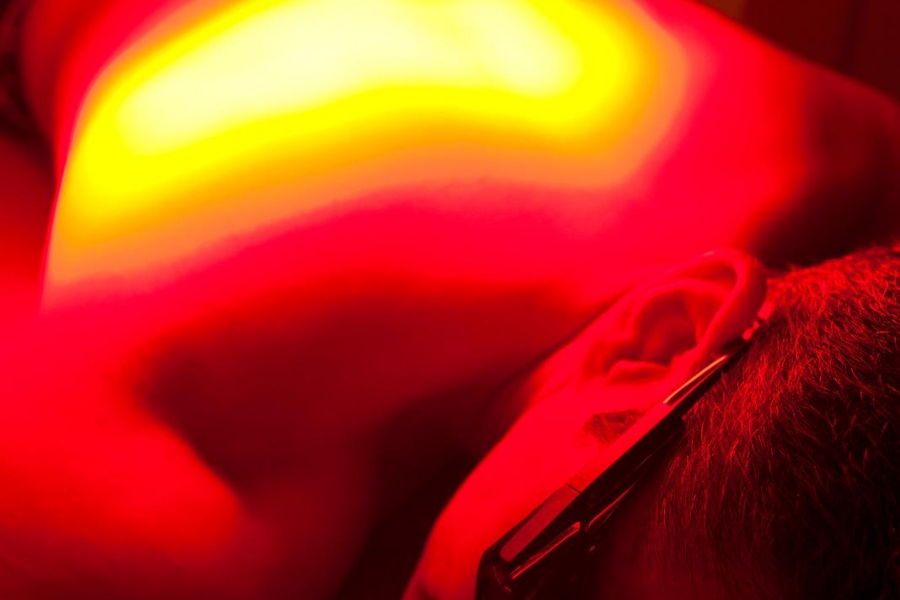LED Light Therapy: Why Multiple Wavelengths are Better
Written by Pam CushingAs you scan the market for LED light therapy devices, one might wonder why some devices have only one wavelength (color) of light, while other devices have a wide variety of wavelengths. Some devices deliver only a single wavelength of light, while other devices deliver multiple wavelengths simultaneously. The answer to those questions can be found in the developmental history of light therapy and the current state of the art.
Late in the last century, British physicist and researcher, Dr. Colin Whitehurst at the Patterson Institute in Manchester, spent more than five years developing an arc light device for the treatment of basal cell carcinomas and squamous cell carcinomas. Photodynamic Therapy involves the pre-treatment of the target area with a photosensitive medication that is activated by light energy.
A cream containing a naturally occurring aminolaevulinic acid is applied to the skin a few hours before exposing it to light energy. Normally, the body converts aminolaevulinic acid to a substance called protoporphyrin IX and filters it out of the system. However, when excessive amounts are added to the area of the skin cancer, the body cannot remove the surplus of protoporphyrin IX, which remains in the cancerous cells. When exposed to light, the protoporphyrin IX kills off the cancerous cells.
THE BEGINNING OF LED
As the activation of the protoporphyrin IX is critical to the efficacy of photodynamic therapy, delivering a very controlled dose of light energy was of a paramount importance. Accordingly, Dr. Whitehurst utilized a single wavelength of narrow-band light energy to accomplish the activation of the topically applied aminolaevulinic acid. Commercially, the most popular embodiment of this modality of skin treatment is the combination of levulan and the BLU-U light from DUSA Pharmaceuticals for treating actinic keratosis.
Early in this century, Dr. Whitehurst’s research, and the arc light device, created the foundation for Manchester-based Photo Therapeutics Ltd and the development of the OmniLux Light therapy device. The OmniLux device had the distinction of being the first to be FDA-cleared for treating a variety of skin conditions. Substituting the arc light technology for newly developed light emitting diodes, Photo Therapeutics introduced monochromatic or single wavelength devices, in the blue, red, and near-infrared light spectrum.
MORE RECENT LED STUDIES
Distinct from photo-stimulation of protoporphyrin IX using a very controlled and narrow-band delivery of light energy, low-level light therapy, according to Michael Hamblin, the Director of the Wellman Center for Photomedicine in Harvard University’s School of Dermatology, “uses low levels of visible or near-infrared light for reducing pain, inflammation and edema, promoting healing of wounds, deeper tissues and nerves, and preventing tissue damage, as well as treat acne vulgaris and wrinkles.” Low-level light therapy is certainly not a new science and has been growing in popularity for over 40 years, coinciding with the development of laser technology. Originally thought to be a peculiar property of laser light (soft or cold lasers), the subject has now broadened to include photobiomodulation and photobiostimulation using non-coherent light — delivered by LED.
According to Hamblin, “the mitochondria are thought to be a likely site for the initial effects of light, leading to increased ATP production, modulation of reactive oxygen species, and induction of transcription factors.”
Recognizing that the mechanism of action at play in low-level light therapy is triggered by multiple wavelengths of light energy, and low-level light therapy did not require a precisely controlled delivery of light energy at peak absorption levels. Light therapy manufactures realized that the efficacy of low-level light therapy could be increased by delivering multiple wavelengths simultaneously. More specifically, delivering multiple wavelengths simultaneously would allow for the treatment of different cell types at different depths of tissue at the same time.
OUTPUT VERSUS PENETRATION OF DEPTH
Contrary to popular belief, the wavelength of light energy determines depth of penetration, not power output. Power output simply determines the amount of light, or dose, delivered at any given level of tissue depending on the wavelength of light delivered. Claims that more power results in deeper penetration are unfounded in the clinical literature. According to Dr. Daniel Barolet, the Director of the School of Dermatology at McGill University, “Light is measured in wavelengths and is expressed in units of nanometers. Different wavelengths are absorbed by different chromophores and can have various effects on tissue. Wavelengths are often referred to using their associated color and include blue (400 nanometers to 470 nanometers), green (470 nanometers to 550 nanometers), red (630 nanometers to 700 nanometers) and near-infrared light (700 nanometers to 1200 nanometers) lights. In general, the longer the wavelength, the deeper the penetration into tissues.”
In summary, while low-level light therapy can trace its evolutionary roots back to photodynamic therapy and the importance of using a single wavelength of light energy to trigger photosensitive products, no such requirement exists in low-level light therapy. Accordingly, delivering multiple wavelengths of light energy simultaneously can result in increased efficacy of treatment because different wavelengths reach different levels of tissue. That being the case, if you are currently in the market for a LED light therapy device, there is no better choice than a device which emits clinically supported wavelengths of blue, red, and near-infrared light energy simultaneously.

Pam Cushing is a registered nurse with over 35 years of experience in emergency medicine. She has worked in the field of aesthetics for over 15 years, full-time for the last five years. Cushing holds a degree at the master’s level, with commendation, as well as a post-graduate diploma in aesthetic medicine, with merit. She is an independent nurse prescriber in the United Kingdom. Cushing is a consultant educator for a couple of companies educating in injectables, skin resurfacing and chemical peel, microneedling, and LED. She thrives on being able to educate, motivate, and encourage others to grow and develop professionally. She is passionate about skin and the benefits of aesthetics in improving the confidence and quality of lives. Cushing believes our key role is to educate the consumer on appropriate treatment modalities with the focus on maintaining skin health.
